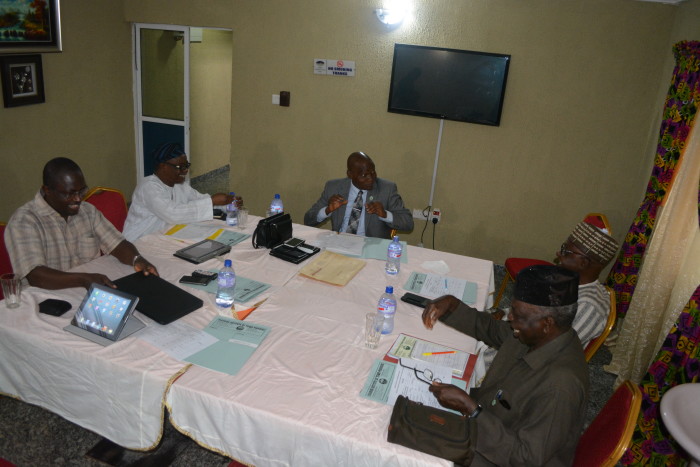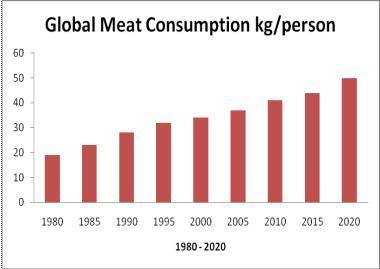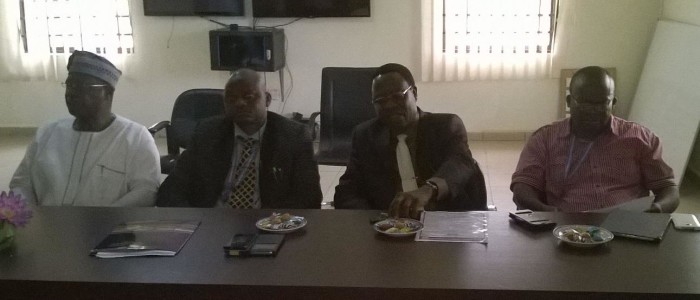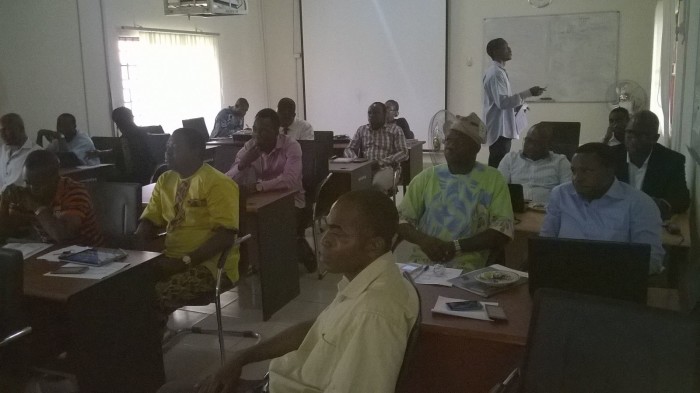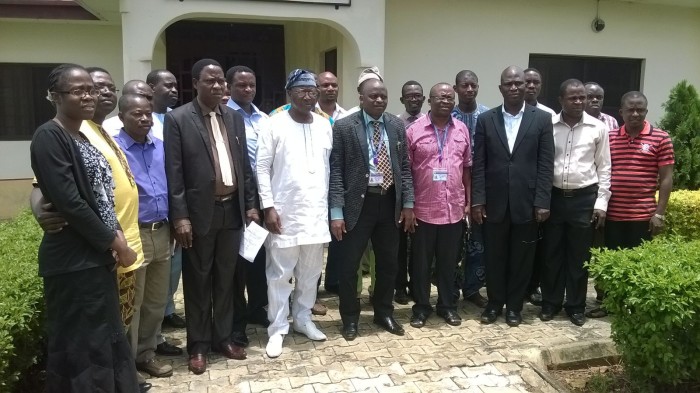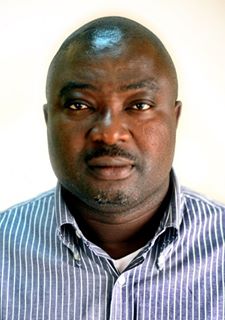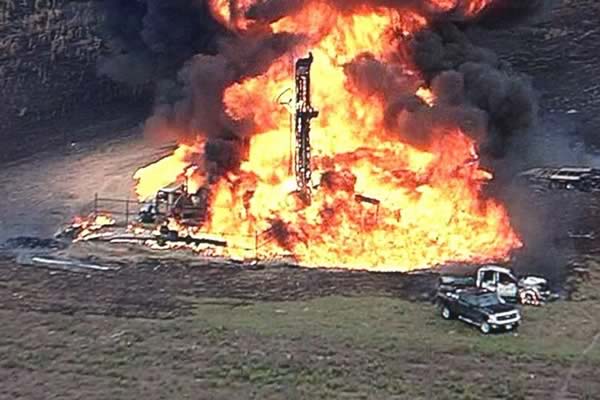As early as 1977, Exxon research scientists warned company executives that carbon dioxide was increasing in the atmosphere due to burning of fossil fuels, an investigation from InsideClimate News revealed on Wednesday. During the 1980s, due to falling oil prices and economic pressures, Exxon began to push back on their own discoveries, saying that science was inconclusive on man-made climate change. Exxon currently denies ever doing the research.
 At a meeting in Exxon Corporation’s headquarters, a senior company scientist named James F. Black addressed an audience of powerful oilmen. Speaking without a text as he flipped through detailed slides, Black delivered a sobering message: carbon dioxide from the world’s use of fossil fuels would warm the planet and could eventually endanger humanity.
At a meeting in Exxon Corporation’s headquarters, a senior company scientist named James F. Black addressed an audience of powerful oilmen. Speaking without a text as he flipped through detailed slides, Black delivered a sobering message: carbon dioxide from the world’s use of fossil fuels would warm the planet and could eventually endanger humanity.
“In the first place, there is general scientific agreement that the most likely manner in which mankind is influencing the global climate is through carbon dioxide release from the burning of fossil fuels,” Black told Exxon’s Management Committee, according to a written version he recorded later.
It was July 1977 when Exxon’s leaders received this blunt assessment, well before most of the world had heard of the looming climate crisis.
A year later, Black, a top technical expert in Exxon’s Research & Engineering division, took an updated version of his presentation to a broader audience. He warned Exxon scientists and managers that independent researchers estimated a doubling of the carbon dioxide (CO2) concentration in the atmosphere would increase average global temperatures by 2 to 3 degrees Celsius (4 to 5 degrees Fahrenheit), and as much as 10 degrees Celsius (18 degrees Fahrenheit) at the poles. Rainfall might get heavier in some regions, and other places might turn to desert.
“Some countries would benefit but others would have their agricultural output reduced or destroyed,” Black said, in the written summary of his 1978 talk.
His presentations reflected uncertainty running through scientific circles about the details of climate change, such as the role the oceans played in absorbing emissions. Still, Black estimated quick action was needed. “Present thinking,” he wrote in the 1978 summary, “holds that man has a time window of five to ten years before the need for hard decisions regarding changes in energy strategies might become critical.”
Exxon responded swiftly. Within months the company launched its own extraordinary research into carbon dioxide from fossil fuels and its impact on the earth. Exxon’s ambitious program included both empirical CO2 sampling and rigorous climate modeling. It assembled a brain trust that would spend more than a decade deepening the company’s understanding of an environmental problem that posed an existential threat to the oil business.
Then, toward the end of the 1980s, Exxon curtailed its carbon dioxide research. In the decades that followed, Exxon worked instead at the forefront of climate denial. It put its muscle behind efforts to manufacture doubt about the reality of global warming its own scientists had once confirmed. It lobbied to block federal and international action to control greenhouse gas emissions. It helped to erect a vast edifice of misinformation that stands to this day.
This untold chapter in Exxon’s history, when one of the world’s largest energy companies worked to understand the damage caused by fossil fuels, stems from an eight-month investigation by InsideClimate News. ICN’s reporters interviewed former Exxon employees, scientists, and federal officials, and consulted hundreds of pages of internal Exxon documents, many of them written between 1977 and 1986, during the heyday of Exxon’s innovative climate research program. ICN combed through thousands of documents from archives including those held at the University of Texas-Austin, the Massachusetts Institute of Technology and the American Association for the Advancement of Science.
The documents record budget requests, research priorities, and debates over findings, and reveal the arc of Exxon’s internal attitudes and work on climate and how much attention the results received.
Of particular significance was a project launched in August 1979, when the company outfitted a supertanker with custom-made instruments. The project’s mission was to sample carbon dioxide in the air and ocean along a route from the Gulf of Mexico to the Persian Gulf.
In 1980, Exxon assembled a team of climate modelers who investigated fundamental questions about the climate’s sensitivity to the buildup of carbon dioxide in the air. Working with university scientists and the U.S. Department of Energy, Exxon strove to be on the cutting edge of inquiry into what was then called the greenhouse effect.
Exxon’s early determination to understand rising carbon dioxide levels grew out of a corporate culture of farsightedness, former employees said. They described a company that continuously examined risks to its bottom line, including environmental factors. In the 1970s, Exxon modeled its research division after Bell Labs, staffing it with highly accomplished scientists and engineers.
In written responses to questions about the history of its research, ExxonMobil spokesman Richard D. Keil said: “From the time that climate change first emerged as a topic for scientific study and analysis in the late 1970s, ExxonMobil has committed itself to scientific, fact-based analysis of this important issue.”
“At all times,” he said, “the opinions and conclusions of our scientists and researchers on this topic have been solidly within the mainstream of the consensus scientific opinion of the day and our work has been guided by an overarching principle to follow where the science leads. The risk of climate change is real and warrants action.”
At the outset of its climate investigations almost four decades ago, many Exxon executives, middle managers and scientists armed themselves with a sense of urgency and mission.
One manager at Exxon Research, Harold N. Weinberg, shared his “grandiose thoughts” about Exxon’s potential role in climate research in a March 1978 internal company memorandum that read: “This may be the kind of opportunity that we are looking for to have Exxon technology, management and leadership resources put into the context of a project aimed at benefitting mankind.”
His sentiment was echoed by Henry Shaw, the scientist leading the company’s nascent carbon dioxide research effort.
“Exxon must develop a credible scientific team that can critically evaluate the information generated on the subject and be able to carry bad news, if any, to the corporation,” Shaw wrote to his boss Edward E. David, the executive director of Exxon Research and Engineering in 1978. “This team must be recognized for its excellence in the scientific community, the government, and internally by Exxon management.”
Exxon budgeted more than $1 million over three years for the tanker project to measure how quickly the oceans were taking in CO2. It was a small fraction of Exxon Research’s annual $300 million budget, but the question the scientists tackled was one of the biggest uncertainties in climate science: how quickly could the deep oceans absorb atmospheric CO2? If Exxon could pinpoint the answer, it would know how long it had before CO2 accumulation in the atmosphere could force a transition away from fossil fuels.
Exxon also hired scientists and mathematicians to develop better climate models and publish research results in peer-reviewed journals. By 1982, the company’s own scientists, collaborating with outside researchers, created rigorous climate models – computer programs that simulate the workings of the climate to assess the impact of emissions on global temperatures. They confirmed an emerging scientific consensus that warming could be even worse than Black had warned five years earlier.
Exxon’s research laid the groundwork for a 1982 corporate primer on carbon dioxide and climate change prepared by its environmental affairs office. Marked “not to be distributed externally,” it contained information that “has been given wide circulation to Exxon management.” In it, the company recognized, despite the many lingering unknowns, that heading off global warming “would require major reductions in fossil fuel combustion.”
Unless that happened, “there are some potentially catastrophic events that must be considered,” the primer said, citing independent experts. “Once the effects are measurable, they might not be reversible.”
The Certainty of Uncertainty
Like others in the scientific community, Exxon researchers acknowledged the uncertainties surrounding many aspects of climate science, especially in the area of forecasting models. But they saw those uncertainties as questions they wanted to address, not an excuse to dismiss what was increasingly understood.
“Models are controversial,” Roger Cohen, head of theoretical sciences at Exxon Corporate Research Laboratories, and his colleague, Richard Werthamer, senior technology advisor at Exxon Corporation, wrote in a May 1980 status report on Exxon’s climate modeling program. “Therefore, there are research opportunities for us.”
When Exxon’s researchers confirmed information the company might find troubling, they did not sweep it under the rug.
“Over the past several years a clear scientific consensus has emerged,” Cohen wrote in September 1982, reporting on Exxon’s own analysis of climate models. It was that a doubling of the carbon dioxide blanket in the atmosphere would produce average global warming of 3 degrees Celsius, plus or minus 1.5 degrees C (equal to 5 degrees Fahrenheit plus or minus 1.7 degrees F).
“There is unanimous agreement in the scientific community that a temperature increase of this magnitude would bring about significant changes in the earth’s climate,” he wrote, “including rainfall distribution and alterations in the biosphere.”
He warned that publication of the company’s conclusions might attract media attention because of the “connection between Exxon’s major business and the role of fossil fuel combustion in contributing to the increase of atmospheric CO2.”
Nevertheless, he recommended publication.
Our “ethical responsibility is to permit the publication of our research in the scientific literature,” Cohen wrote. “Indeed, to do otherwise would be a breach of Exxon’s public position and ethical credo on honesty and integrity.”
Exxon followed his advice. Between 1983 and 1984, its researchers published their results in at least three peer-reviewed papers in Journal of the Atmospheric Sciences and an American Geophysical Union monograph.
David, the head of Exxon Research, told a global warming conference financed by Exxon in October 1982 that “few people doubt that the world has entered an energy transition away from dependence upon fossil fuels and toward some mix of renewable resources that will not pose problems of CO2 accumulation.” The only question, he said, was how fast this would happen.
But the challenge did not daunt him. “I’m generally upbeat about the chances of coming through this most adventurous of all human experiments with the ecosystem,” David said.
Exxon considered itself unique among corporations for its carbon dioxide and climate research. The company boasted in a January 1981 report, “Scoping Study on CO2,” that no other company appeared to be conducting similar in-house research into carbon dioxide, and it swiftly gained a reputation among outsiders for genuine expertise.
“We are very pleased with Exxon’s research intentions related to the CO2 question. This represents very responsible action, which we hope will serve as a model for research contributions from the corporate sector,” said David Slade, manager of the federal government’s carbon dioxide research program at the Energy Department, in a May 1979 letter to Shaw. “This is truly a national and international service.”
Business Imperatives
In the early 1980s Exxon researchers often repeated that unbiased science would give it legitimacy in helping shape climate-related laws that would affect its profitability.
Still, corporate executives remained cautious about what they told Exxon’s shareholders about global warming and the role petroleum played in causing it, a review of federal filings shows. The company did not elaborate on the carbon problem in annual reports filed with securities regulators during the height of its CO2 research.
Nor did it mention in those filings that concern over CO2 was beginning to influence business decisions it was facing.
Throughout the 1980s, the company was worried about developing an enormous gas field off the coast of Indonesia because of the vast amount of CO2 the unusual reservoir would release.
Exxon was also concerned about reports that synthetic oil made from coal, tar sands and oil shales could significantly boost CO2 emissions. The company was banking on synfuels to meet growing demand for energy in the future, in a world it believed was running out of conventional oil.
In the mid-1980s, after an unexpected oil glut caused prices to collapse, Exxon cut its staff deeply to save money, including many working on climate. But the climate change problem remained, and it was becoming a more prominent part of the political landscape.
“Global Warming Has Begun, Expert Tells Senate,” declared the headline of a June 1988 New York Times article describing the Congressional testimony of NASA’s James Hansen, a leading climate expert. Hansen’s statements compelled Sen. Tim Wirth (D-Colo.) to declare during the hearing that “Congress must begin to consider how we are going to slow or halt that warming trend.”
With alarm bells suddenly ringing, Exxon started financing efforts to amplify doubt about the state of climate science.
Exxon helped to found and lead the Global Climate Coalition, an alliance of some of the world’s largest companies seeking to halt government efforts to curb fossil fuel emissions. Exxon used the American Petroleum Institute, right-wing think tanks, campaign contributions and its own lobbying to push a narrative that climate science was too uncertain to necessitate cuts in fossil fuel emissions.
As the international community moved in 1997 to take a first step in curbing emissions with the Kyoto Protocol, Exxon’s chairman and CEO Lee Raymond argued to stop it.
“Let’s agree there’s a lot we really don’t know about how climate will change in the 21st century and beyond,” Raymond said in his speech before the World Petroleum Congress in Beijing in October 1997.
“We need to understand the issue better, and fortunately, we have time,” he said. “It is highly unlikely that the temperature in the middle of the next century will be significantly affected whether policies are enacted now or 20 years from now.”
Over the years, several Exxon scientists who had confirmed the climate consensus during its early research, including Cohen and David, took Raymond’s side, publishing views that ran contrary to the scientific mainstream.
Paying the Price
Exxon’s about-face on climate change earned the scorn of the scientific establishment it had once courted.
In 2006, the Royal Society, the United Kingdom’s science academy, sent a harsh letter to Exxon accusing it of being “inaccurate and misleading” on the question of climate uncertainty. Bob Ward, the Academy’s senior manager for policy communication, demanded that Exxon stop giving money to dozens of organisations he said were actively distorting the science.
In 2008, under mounting pressure from activist shareholders, the company announced it would end support for some prominent groups such as those Ward had identified.
Still, the millions of dollars Exxon had spent since the 1990s on climate change deniers had long surpassed what it had once invested in its path-breaking climate science aboard the Esso Atlantic.
“They spent so much money and they were the only company that did this kind of research as far as I know,” Edward Garvey, who was a key researcher on Exxon’s oil tanker project, said in a recent interview with InsideClimate News and Frontline. “That was an opportunity not just to get a place at the table, but to lead, in many respects, some of the discussion. And the fact that they chose not to do that into the future is a sad point.”
Michael Mann, director of the Earth System Science Center at Pennsylvania State University, who has been a frequent target of climate deniers, said that inaction, just like actions, have consequences. When he recently spoke to InsideClimate News, he was unaware of this chapter in Exxon’s history.
“All it would’ve taken is for one prominent fossil fuel CEO to know this was about more than just shareholder profits, and a question about our legacy,” he said. “But now because of the cost of inaction—what I call the ‘procrastination penalty’—we face a far more uphill battle.”
By Neela Banerjee, Lisa Song and David Hasemyer (InsideClimate News)
ICN staff members Zahra Hirji, Paul Horn, Naveena Sadasivam, Sabrina Shankman and Alexander Wood also contributed to this report.
Part II, coming on September 17, will further examine Exxon’s early climate research.


